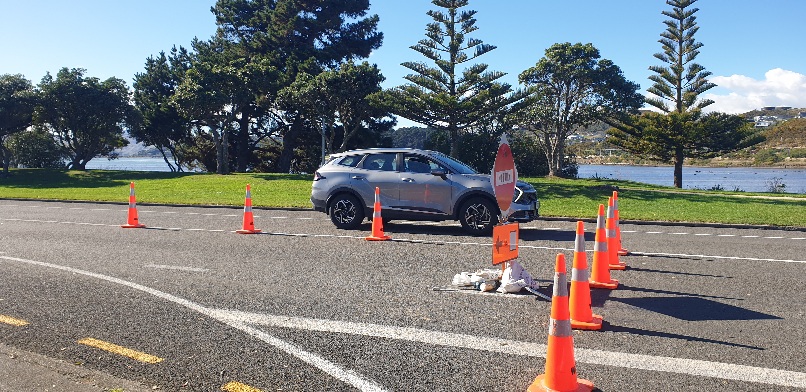Natural experiments, and traffic
You’d think that restricting road space for general traffic will automatically make streets more congested. But does it? Natural experiments are worth a look…
Next time you’re in a place where there’s lots of coming and going by people, and you see some road works with temporary traffic managment (TTM), don’t just see the ugly orange cones and shouty signs.
Take a good look at how they’re changing the way vehicles – and people – are using the space.
For able-bodied people on foot, “disruptive” road works can, often, be safer. Uglier, for sure! But also safer.
How so? Because cars are travelling much slower (albeit not often at the intended 30kph), because people driving are paying lots more attention because of all the new stuff in the way, and because the expanse of live traffic lane you have to cross is usually a lot shorter.
(For people with disabilities, of course, TTM is often just terrible.)

But the congestion!
The terrible dragon that everyone fears when doing road-works is creating traffic congestion. And the “hydrological” theory of traffic is so strong, so instinctive, that we all think “if we make a pinch-point in the pipe , it’ll just get backed up” or “if we block a flow there, it’ll just flow around”.
It’s so intuitive that when there’s a high-profile TTM worksite anywhere in the local area, especially one that’s for something fRiVoLoUs (i.e. that’s not for cars), we tend to blame on it every bit of congestion we experience nearby – including all the considerable background variation in traffic. (We do though, don’t we?)
But traffic isn’t a flow of inanimate natural forces, like water or a scree slope. It’s people navigating those vehicles, making decisions about whether they take a car at all, and then choices about when they travel, what route they take, how fast they go.

Evaporating traffic
That’s why the phenomenon of disappearing traffic or evaporating traffic is a thing. Some of the most startling examples are removing entire traffic lanes or even entire motorways from the general traffic network, but even local-scale, even tactical (temporary, adaptive) street changes see evaporating traffic.
Many of these “less space for cars” initiatives don’t just “block” traffic: they’re packaged with initiatives that let people travel other ways, or not need to travel so much. But even where there’s just a bunch of road space taken out of the driving network, and no other improvements, the phenomenon is real. Traffic experts around the world see, in all sorts of contexts, that a significant proportion of traffic just disappears.
It doesn’t flow into surrounding streets or roads. It doesn’t back up in congestion. It’s just… not there any more. The people usually choosing to drive a particular route, at a particular time, at a particular speed are making different choices.
Often, roadworks finish and the TTM is removed, and the road is put back to normal – except with a new building nearby, or a fixed pipe underneath. But how often could we lock in the slower, more attentive driving, the safer crossing, once we realise it’s actually not that hard to change our routines a little?
Leave a comment